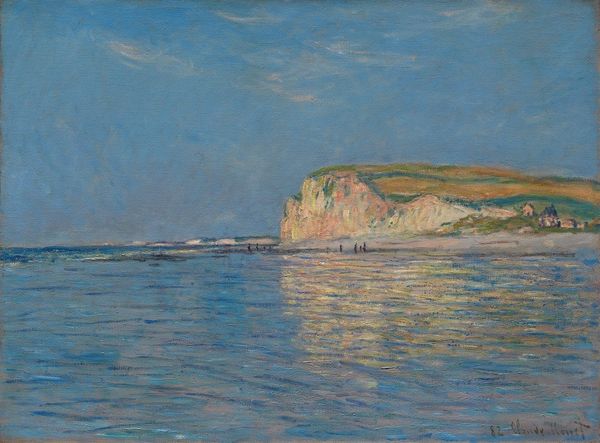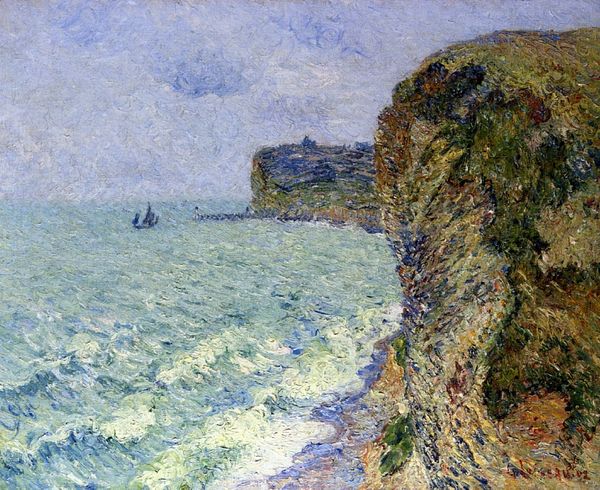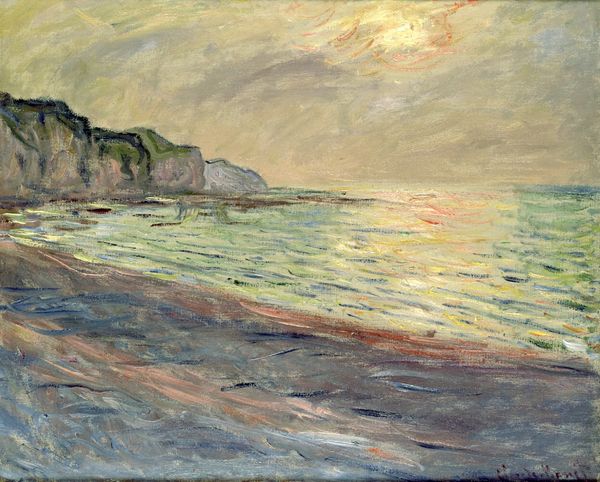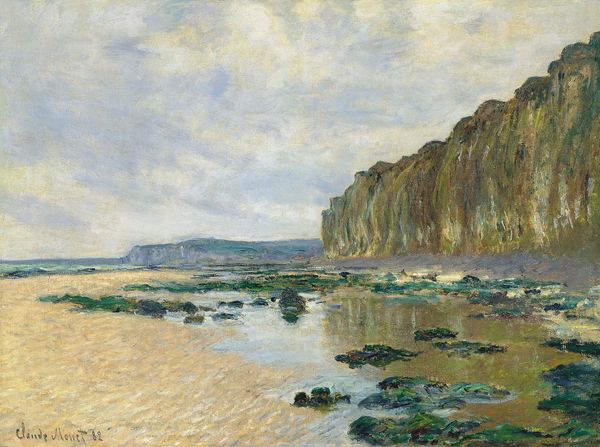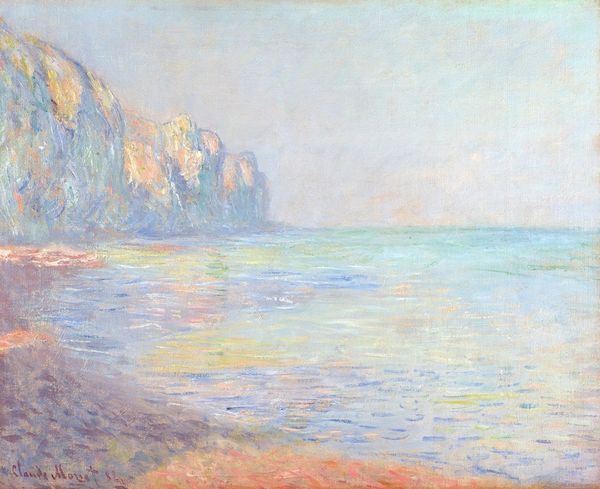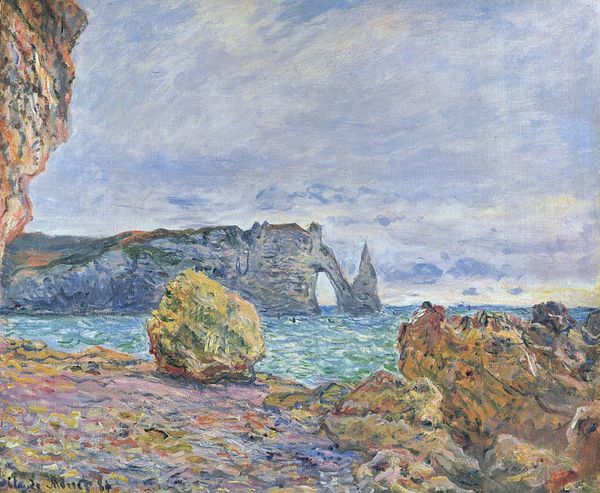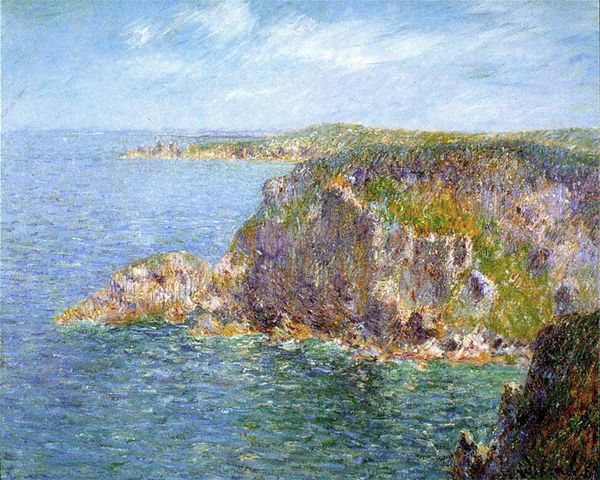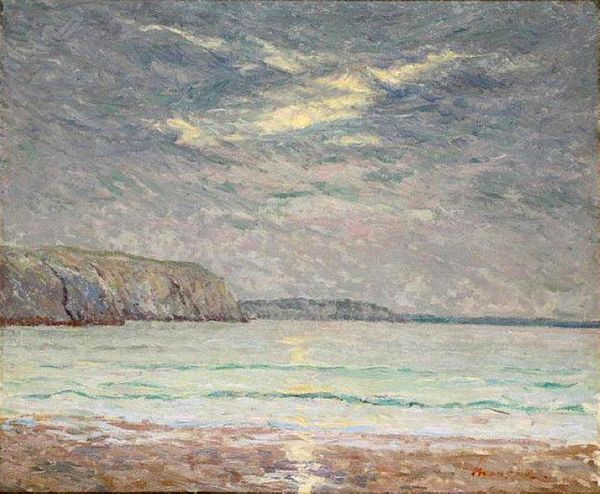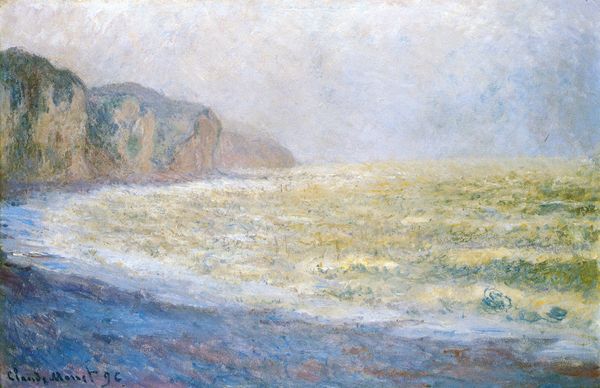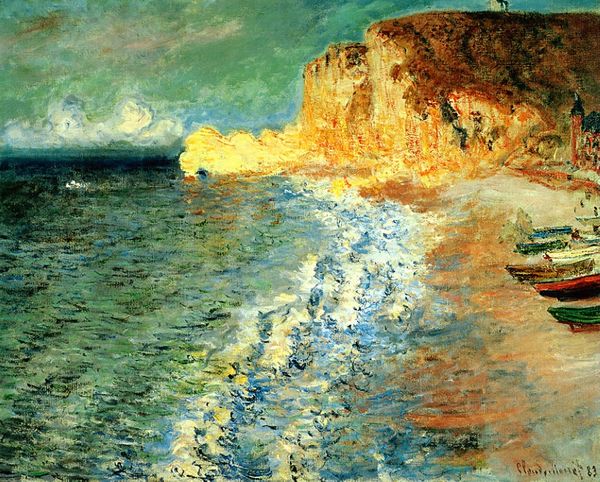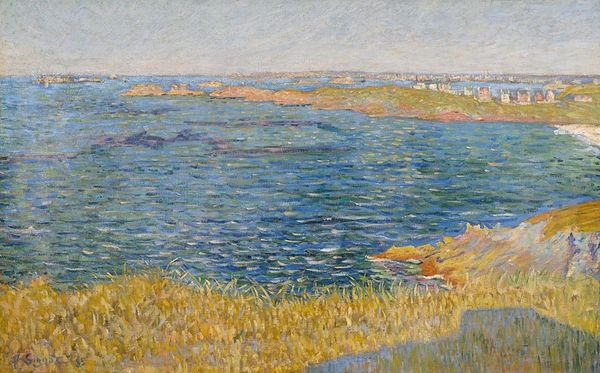
painting, plein-air, oil-paint
#
sky
#
painting
#
impressionism
#
plein-air
#
oil-paint
#
landscape
#
impressionist landscape
#
oil painting
#
ocean
#
seascape
#
water
#
sea
Copyright: Public domain
Editor: This is "Shadows on the Sea at Pourville" by Claude Monet, painted in 1882. It's an oil painting and depicts a coastal landscape. I’m struck by the shadows dominating the sea in the foreground—they give the whole piece a very powerful sense of movement and depth. How would you interpret this work? Curator: This piece encapsulates a critical moment in the development of Impressionism and the shift in art's relationship with the public. Consider the term "plein-air" - painting outdoors. Monet was deeply involved with capturing the fleeting moment, a direct response against academic painting happening in studios, deemed “official” by the French Salon system. It democratized not just the *process* of art-making but also the subject matter. How do you see the implications of representing an everyday scene for public consumption? Editor: That's fascinating! So, by choosing a simple seascape over, say, a historical event, Monet challenged the established hierarchy of subjects deemed worthy of artistic attention? It feels inherently political. Curator: Precisely! Monet and his peers were also challenging traditional viewing habits and locations by exhibiting outside established spaces like the Salon. Instead, they created their own exhibition spaces and sold work directly to collectors outside the normal distribution chains. These small brushstrokes documenting immediate sensory experience, originally rejected as "unfinished" by the art establishment, gained a place of appreciation. What do you think that says about power and taste? Editor: It suggests that power isn’t fixed and that artistic taste evolves based on what the public is exposed to, and willing to embrace. It shows that there is space to reshape institutions. I hadn't thought about this landscape as a form of subtle protest! Thank you. Curator: Indeed. Analyzing “Shadows on the Sea” reveals the social and artistic battles waged by Monet and his fellow impressionists to transform what was considered “art” and where it belonged.
Comments
No comments
Be the first to comment and join the conversation on the ultimate creative platform.
